Material selection for boardwalks must comprehensively consider factors such as environmental adaptability, durability, maintenance cost, aesthetics, and ecological impact. Below is a comparative analysis of several mainstream materials:
1. WPC Flooring (Recommended)
Advantages:
Slip & Wear Resistant: Wood-textured surface with high friction coefficient, reducing slippage even in rain.
Exceptional Weather Resistance: UV-resistant, moisture-proof, and rot-proof, resisting cracking/deformation for long-term outdoor use.
Low Maintenance: No painting or anti-corrosion treatment needed; easy to clean, with a service life of 10+ years.
Eco-Friendly & Aesthetic: Strong wood texture, diverse colors, and customizable patterns.
Easy Installation: Lay the keel with snap-fit installation for fast construction.
Disadvantages:
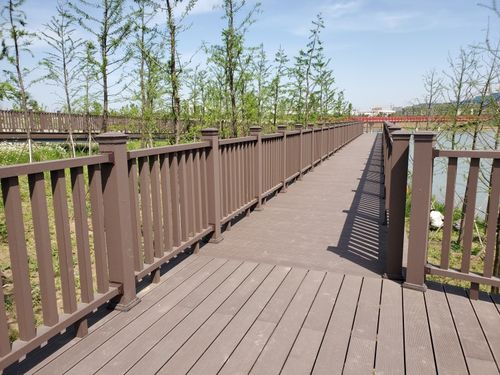
2. Natural Wood
Advantages:
Naturally beautiful, highly compatible with ecological environments.
Flexible construction, suitable for complex terrains.
Comfortable foot feel (elasticity, slip resistance).
Disadvantages:
Prone to rotting and insect infestation (requires regular anti-corrosion treatment).
Easily deformed or cracked in humid environments.
High maintenance cost (needs protective coating every 3–5 years).
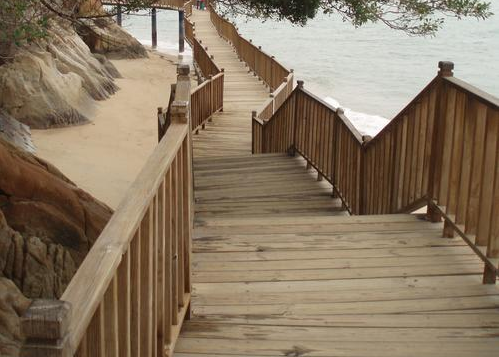
3. Anti-Corrosion Wood
Advantages:
Disadvantages:
Requires regular anti-corrosion painting; prone to rotting and cracking without maintenance (high upkeep costs).
Moderate slip resistance (slippery when wet), prone to fading and deformation over time.
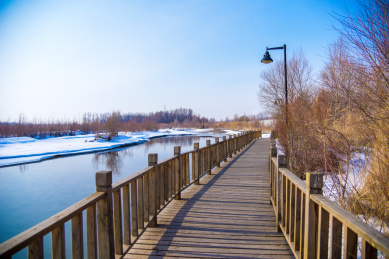
4. Concrete/Stone
Advantages:
Extremely durable with a lifespan of decades (30+ years).
Fire-resistant and compression-resistant, suitable for high-traffic areas.
Disadvantages:
Heavy weight, difficult construction.
Cold and slippery in winter (requires anti-slip treatment).
Poor ecological affinity.
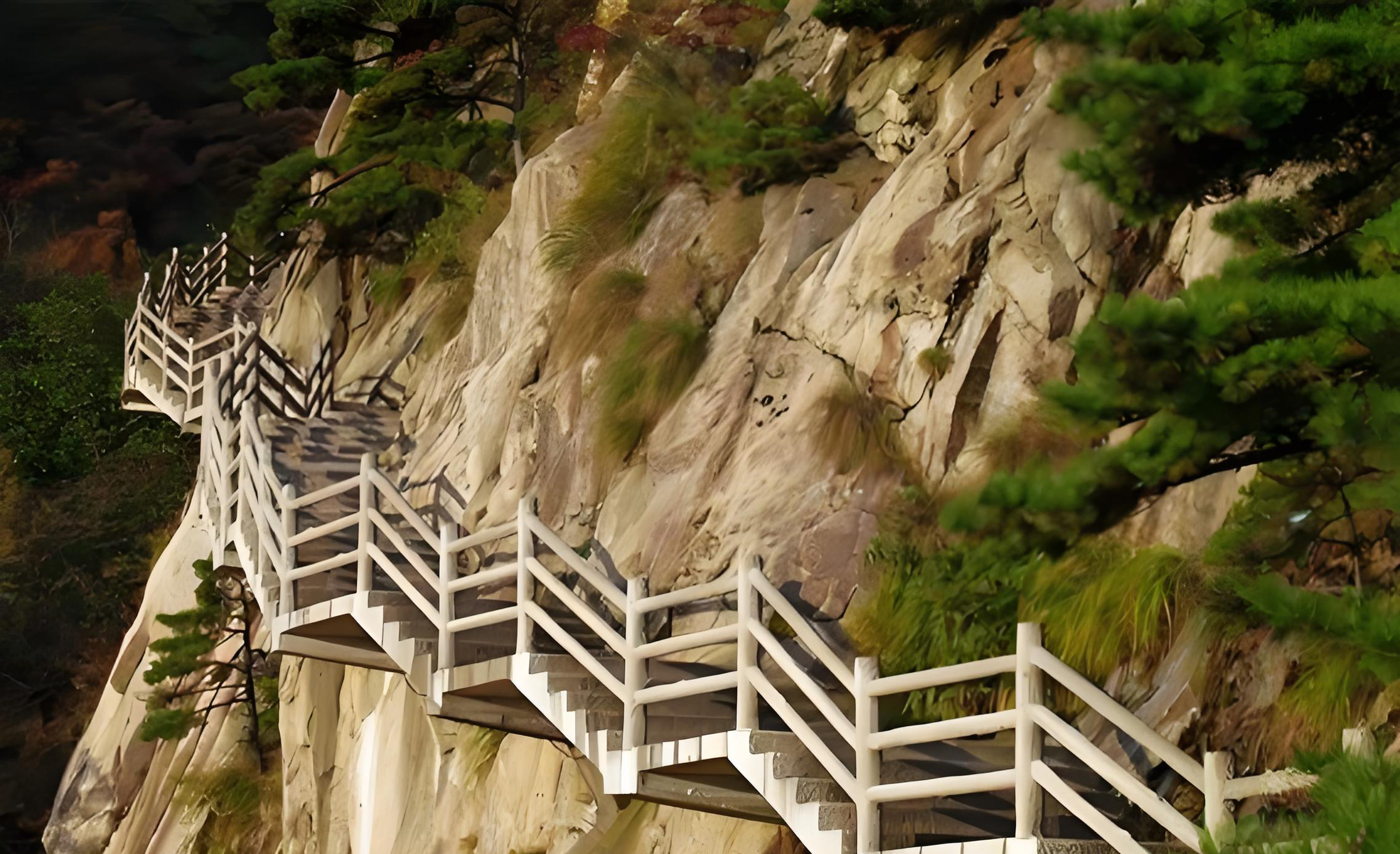
5. Steel Structure
Common Forms: Galvanized steel/stainless steel frames + wood panels/glass.
Advantages:
High strength, suitable for large-span boardwalks.
Strong modern aesthetic with high design flexibility.
Moisture and corrosion resistant (with surface treatment).
Disadvantages:
High cost, requires regular anti-rust maintenance.
Surface overheats in summer and feels cold in winter.
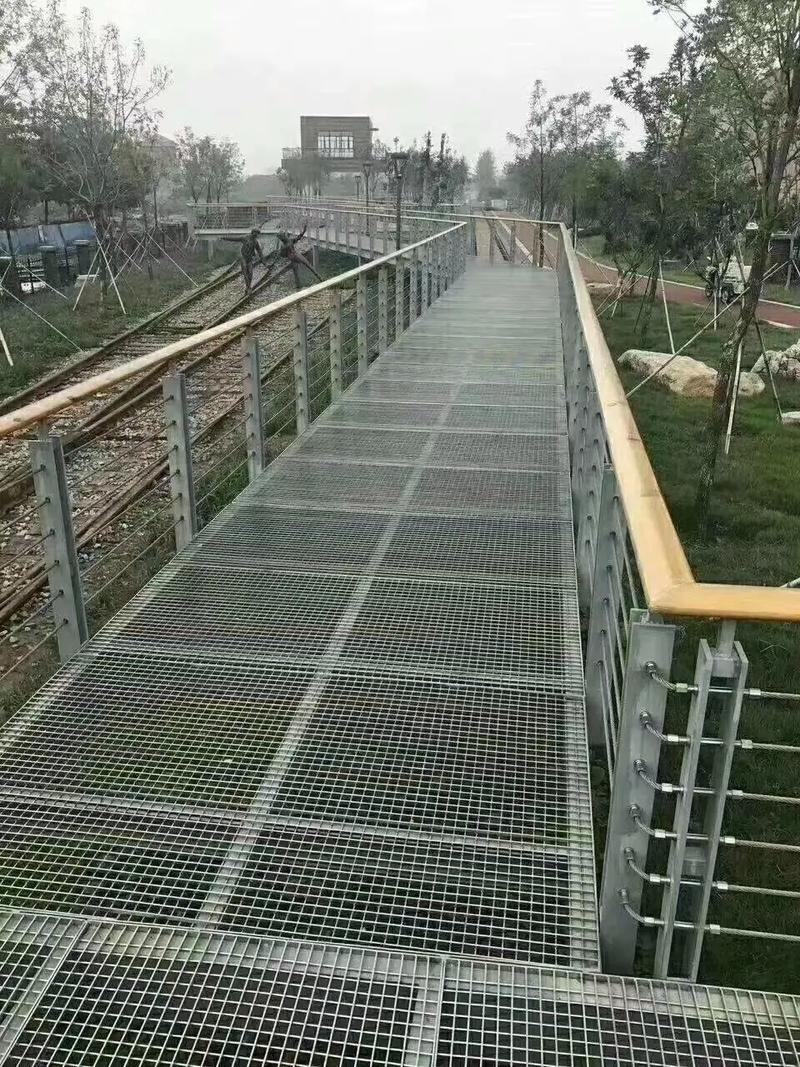
Key Considerations for Material Selection
Budget: Natural wood has low initial costs but high maintenance expenses; WPC/concrete has higher upfront investment but saves money long-term.
Lifespan: Prioritize WPC or concrete (10+ years) in humid areas.
Aesthetics: WPC or reconstituted bamboo fits natural landscapes; concrete/steel suits modern styles.
Consult professional contractors and test material samples based on local climate conditions.
For WPC products, contact +86-13357168058 to order!





 扫一扫,关注我们最新消息
扫一扫,关注我们最新消息